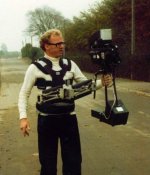To the OP - No.
For static subjects it would help [a little], but can use a tripod for those.
It's not going to add value when the subject is moving. A rangefinder can be handheld reliably to 1/12 of a second, even with longer focal lengths.
A sensor with better low light performance / dynamic range is MUCH more important than stabilization. ..More important than more pixels.
Here are two examples from last week. Was shooting a 5D (1st version) and the M9 side by side. ISO 1250 wasn't quite enough, had to go to 2000 on the M9 (1600 on 5D w/ the 85/1.2 and 50/1.2).
BTW - for an event like this with limited available light, the 5D (not even MkII) outperformed the M9 and produced much better files. I would have needed to keep the ISO below 800 on the M9 to get an equivalent file quality. The 5D was easier/faster to focus (manual focus with upgraded focusing screen, also these are 1.2 lenses which helps). If I were doing weddings, I'd have to sell a Leica lens to get a MkII body. Maybe use a flash with the M9.
😱 Regardless, I'm happy with the M9 and carry it every day.
🙂
M9, 35mm biogon, between F2 and 2.8; ISO 2000; 1/12 sec
M9; 75mm lux; between F1.4 and 2; ISO 2000; 1/25 sec
Image stabilization relative to other priorities = waste of money and limited Leica engineering resources.




